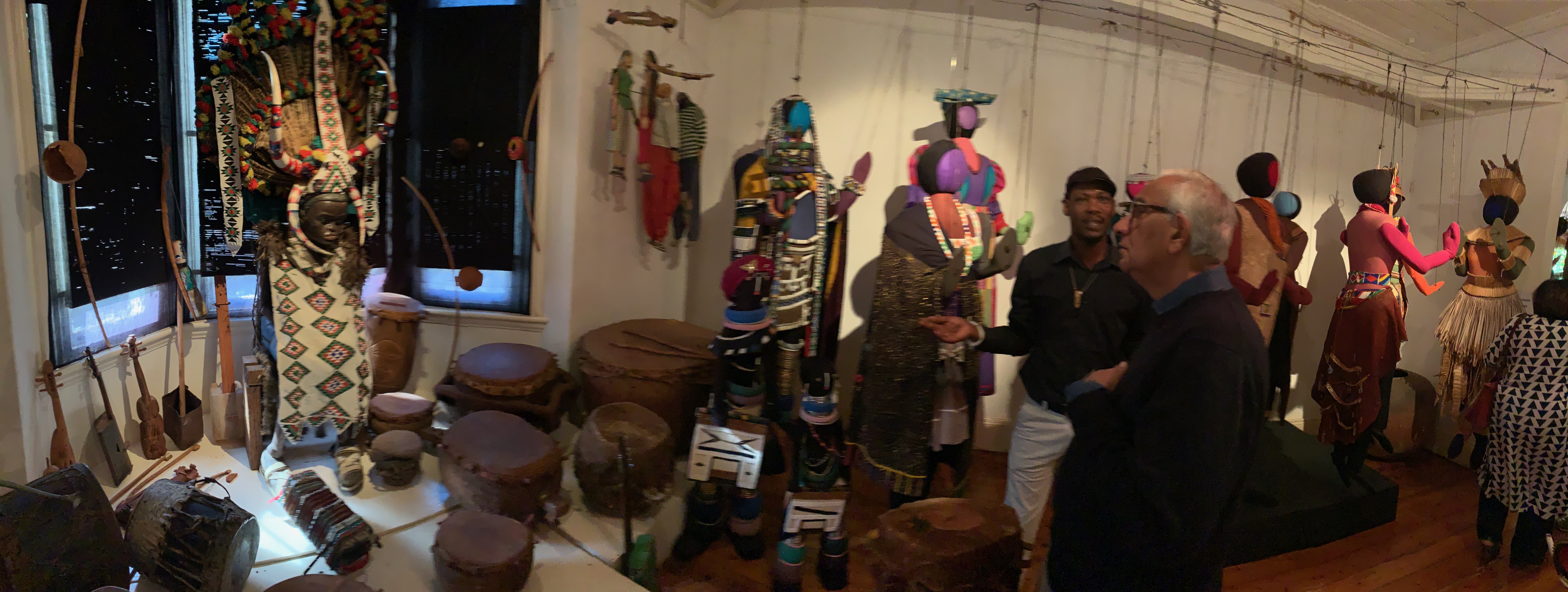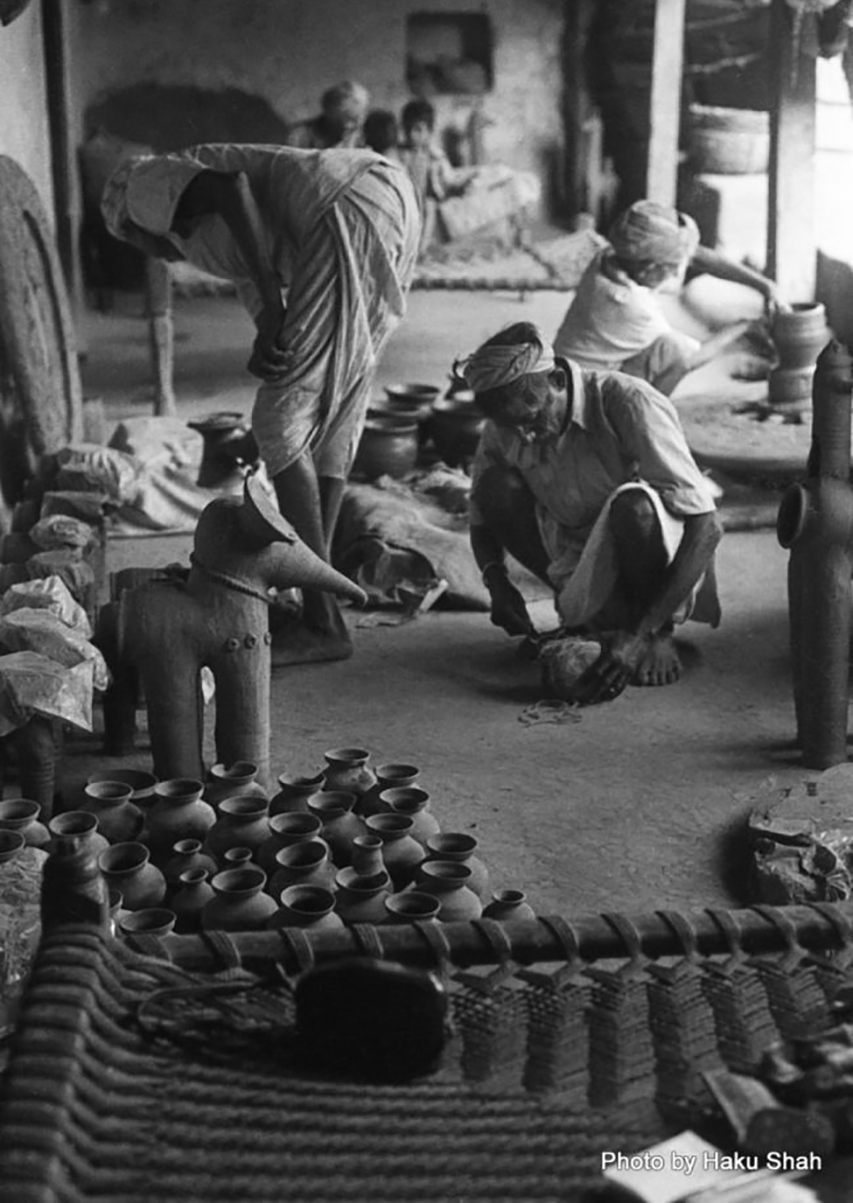Earlier in 2019, the developing world lost one of its more interesting cultural anthropologists. The Gujarati Indian Haku Shah was, among other disciplines, an artist, an archivist, a documentarian and also an important author on tribal art and culture.
Shah was a man inspired by Gandhian principles of rural development and harmonious living with nature, and in this vein perhaps his most important contribution over the last 50 years was in making the case for the traditional craftsmen’s knowledge system being as valuable as the modern urban designer’s training. His life’s work was on blurring the line between the artist and the artisan, between the functional and the aesthetic. In his universe, a distinction between “high” art and “low” craft simply did not exist.

Phansi Museum (Copyright: author)
“Simply because an object is common in the social sense,” he said, “does not mean that it is ordinary, not worth placing in an exhibition or museum.” Which is exactly what he did.
Besides expanding the space for tribal art recognition at the Indian Institute of Design, in the 1970s Shah also set up the Tribal Museum in the Gujarat Vidyapeet, which was a university set-up by Gandhi in the 1920s to nurture an alternative system of education for Indians, free from colonial influence.
Shah died in March 2019 at the age of 85.

Photo documentation of votive terracotta horses, used for ritual purposes,
made in Poshina village, Gujarat, by Haku Shah in the 1970s. (Courtesy, Pathiv Shah)
I thought of Shah’s work and life’s purpose this week while visiting Durban’s Phansi Museum, and contemplating the work and life purpose of Paul Mikula. Mikula is one of our country’s more important architects, with a canvas dating from the 1970s which is diverse, thoughtful and deeply respectful of nature. A spiritual successor to the gifted Hans Hallen and Ron Lucock, Mikula continued and enhanced a tradition of buildings always deferential to social context and appropriate construction methods – and has made Durban’s architectural landscape the richer for it.
But it is in Mekula’s multi-disciplined contribution that one first sees parallels to Shah. In the 1990s Mikula was a driving force behind the BAT Centre, and latterly a powerful repository of local craft and tribal knowledge has been nurtured by him at the Phansi Museum in Glenwood.
Drawing on 30 years of local collecting by Mikula as well as his sourcing of more contemporary pieces by local artisans, Phansi is a repository of local wisdom unlike any other I’ve come across in the country. Visiting it I was embarrassed that I hadn’t heard of it before, even though it’s been around for over a decade. Here the artist and the artisan are not separated. Under Mekula’s vision “Phansi has a particular love and interest for all people and things creative, how they are made, their beauty and their function. We exist to treasure and to inspire”.
The museum overflows with a truly fine collection of tribal beadwork, woodwork, body art, clay vessels and pottery. It’s also a space allowing the objects to tell a story not just of identity but also, given our country’s tortured history, of identity’s antagonists – that of migration, separation, erosion.
It is filled with the scent of memory and of loss. But in the dignity of its construction and assembly, it is also a place of African humanity. Here, the amaZulu are not simply a homogenous entity for easy consumption, but brought to life as a kaleidoscope of the different clans. The artwork of the Ndwande, for example, is contrasted to the Mthethwa or the Biyela, or from those traditionally found in the Nomgoma or Tugela areas. Beadwork of the amaSwazi, Ndebele, Xhosa and Pedi are also shown.
Arriving on the first floor of the beautiful building (a restored colonial-era house of one of Durban’s earliest cultural anthologists, Esther Roberts) one finds a carcass of a Limpopo tree stretched out in the shape of a beached fish, skin taut and ready for its transformation into a drumbeat vessel of communication. Except that it actually a vessel of passage, the fish mouth opening to house the entrance to a coffin, which the artist hoped to one day house himself in. Nearby, intricate branches give birth to bulbous fish, weighing heavy but never engulfing the tree – a symbol of harmonious relations with nature.
The exhibits showcase, but also suggest. In many of the artefacts, beadwork is a crucial instrument of shape, form and colour. Yet they also indirectly reflect the ambivalent side of colonialism; the beads having replaced the indigenous grass and tobacco leaves which represented the earliest materials used – but by being instruments of trade they also hint at an encroaching Western influence.
Like the Indian harmonium, an instrument brought to the subcontinent by European traders on the waves of fin de siècle empire-building, its current ubiquity masks other layers of meaning. Similarly, the presentation of objects made with colourful telephone wire represents both the ingenuity of local craftsmen in incorporating innovative elements into their design – but also suggests the forced mass movement of these people into the cities and the loss of tribal freedoms.
So Phansi is a valuable addition to Durban’s cultural scene and well worth a visit. Unlike Haku Shah, however, who achieved great respect and following, Paul Mekula’s brainchild, as noteworthy as it is, is ultimately threatened, like so many other cultural institutions in KwaZulu-Natal, with lack of adequate support from local arts authorities and ambivalent audiences. Let us hope that Minister Nathi Mthethwa is able to pay a visit there soon. DM

















 Become an Insider
Become an Insider